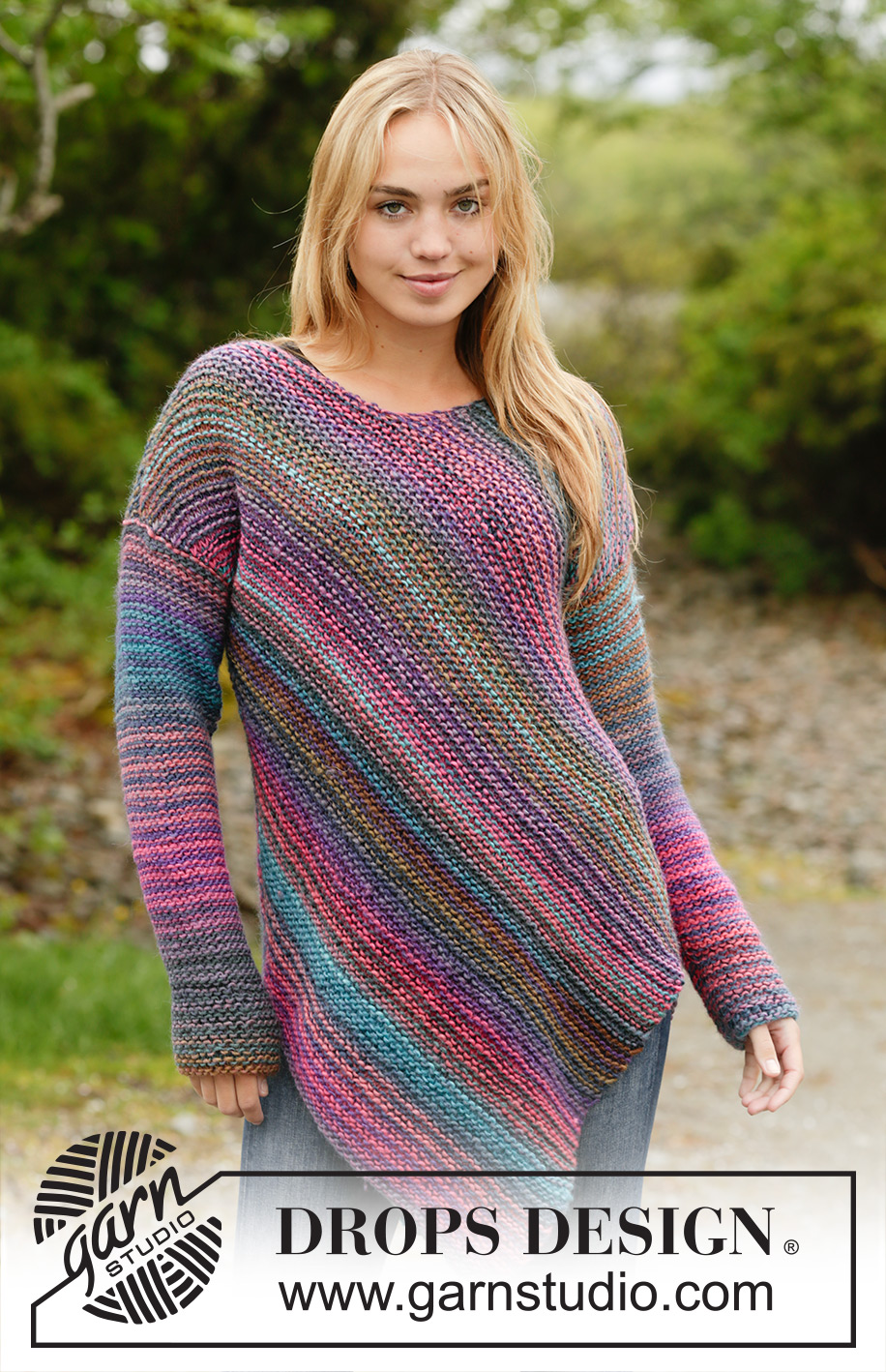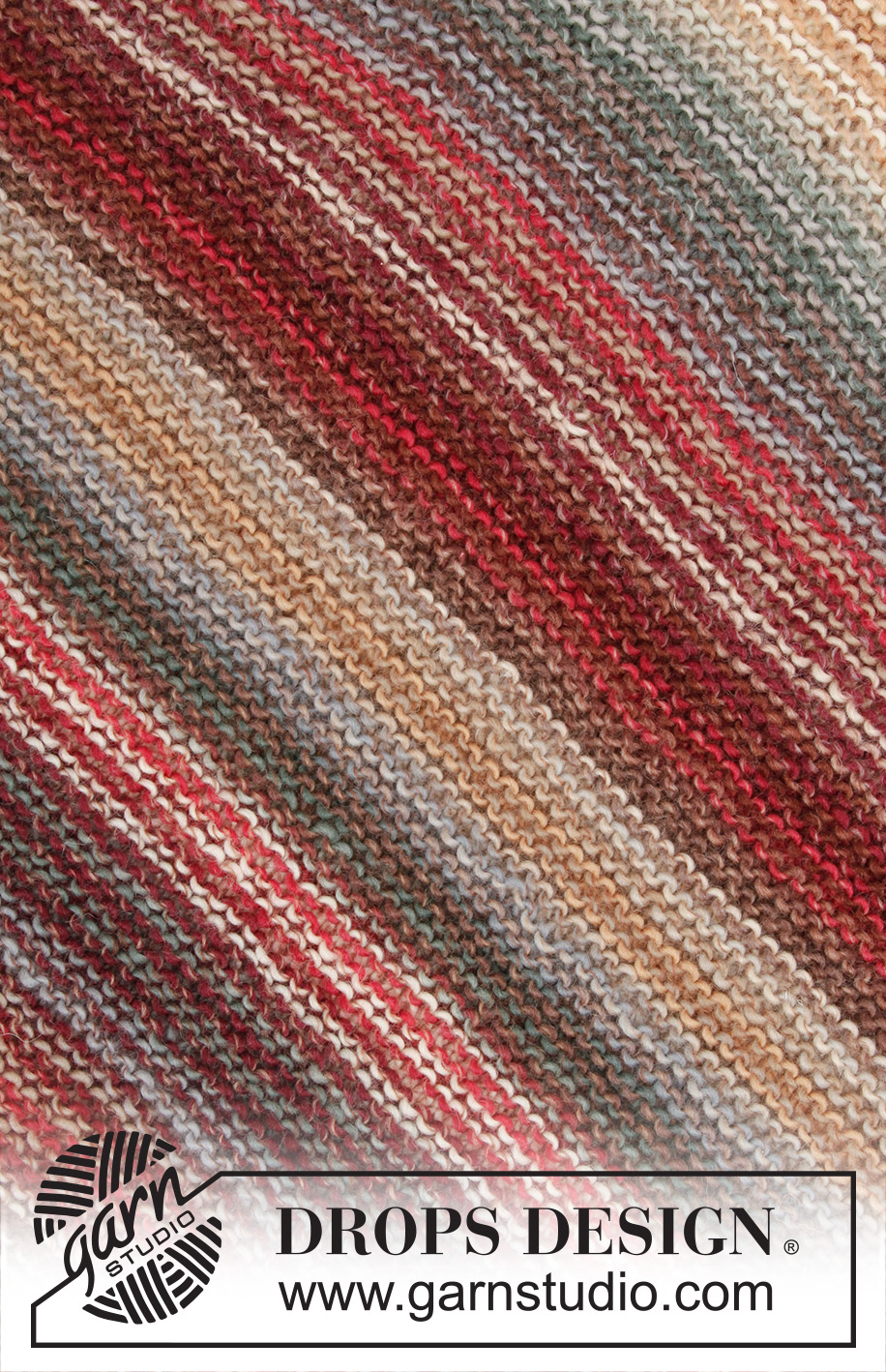Comments / Questions (44)
![]() Annie wrote:
Annie wrote:
Bonjour, si je choisis la laine FABEL pour remplacer la BIG DELIGHT, quels coloris conseillez-vous pour un rendu identique et combien de pelotes? J'ai un doute sur le résultat du convertisseur qui me recommande un total de 12 pelotes. Merci
15.09.2024 - 18:22DROPS Design answered:
Bonjour Annie, vous pouvez utiliser 2 fils Fabel (donc oui il faudra bien 300 g Fabel en tricotant avec 2 fils, rappelez-vous que l'on se base sur le métrage) pour remplacer 300 g Big Delight; retrouvez toutes les couleurs Fabel dans le nuancier, vous pouvez également tricoter Fabel avec une autre laine unie (Fabel unie ou Alpaca, Kid-Silk, etc..) du groupe A - retrouvez des idées d'associations de fils/couleurs en bas de page du nuancier. Votre magasin saura également vous conseiller les meilleures alternatives possibles, même par mail ou téléphone. Bon tricot!
16.09.2024 - 09:31
![]() Katharina Haase wrote:
Katharina Haase wrote:
Wie kann ich big delight für das Modell Sideways glance ersetzen ? Es ist ziemlich kompliziert bei Ihnen!
24.03.2024 - 15:37
![]() Iris Tuomi wrote:
Iris Tuomi wrote:
Hei, oikean koon valitseminen on todella vaikeaa, koska ne on ilmoitettu vain S - XXXL. Löytyykö teiltä koko-opasta?
12.02.2023 - 15:50DROPS Design answered:
Hei, löydät neuleen mitat ohjeen alapuolella olevasta mittapiirroksesta.
15.02.2023 - 16:31
![]() Megan wrote:
Megan wrote:
The pattern says to work the entire garment in garter stitch. But I think I'm understanding that the sleeves (after 10 ridges) are worked in stocking stitch but sewn into the body with the WS facing out. Is that correct? Thanks!
21.10.2022 - 00:55DROPS Design answered:
Hi Megan, Yes, the sleeves are worked in stocking stitch, then the whole garment is assembled with the wrong side facing out. Happy knitting!
21.10.2022 - 06:49
![]() Essie wrote:
Essie wrote:
Hello, i guess my question wasn't completely clear: what i'd like to know is how to sew seams together: on the sleeves, and, separately, the seams for front and back. (So it is not (yet) about sewing the sleeves in the body, i guess the grafting stitch video?). For sewing seams together several videos are attached , and no tips in the pattern itself. Do i use the mattress stitch ? Or the method for sewing together garter stitch. And where to use the invisible side seam as it is RS?
04.12.2020 - 11:44DROPS Design answered:
Dear Essie, since pattern is worked in garter stitch, you can sew together ridges together on side /shoulders using this technique - and sew sleeves using this technique. Hope this will help. Happy sewing!
04.12.2020 - 12:09
![]() Essie wrote:
Essie wrote:
How am i supposed to knit together the sleeves and the front and back? I see several video's, but they are all in one color, and with the stripes i also have the yarn of the other colour at the side of the work. Some explanation would be very much appreciated: do i sow together in the colour of the stripe at hand? And change colour every 2 rows? Or just in one colour? And how do i handle the extra yarn at the side?
03.12.2020 - 23:46DROPS Design answered:
Hi Essie, You sew the arms into the body, either with the yarn or a cotton thread of the same colour as the last stripe on the sleeves. Happy knitting!
04.12.2020 - 07:28
![]() Essie wrote:
Essie wrote:
Mijn dochter zou dit model fantastisch vinden. Is er een vergelijkbaar model in kindermaat (ca 140) zodat ik kan omrekenen, of dat andere model gebruiken?
01.07.2020 - 12:04DROPS Design answered:
Dag Essie,
Helaas is hier geen kindervariant van. Als je daar handig in bent zou je het patroon voor jezelf om kunnen rekenen naar de juiste maten.
04.07.2020 - 17:20
![]() Larissa wrote:
Larissa wrote:
Hallo, ich möchte gerne diesen Pullover stricken mit dünnen Fäden, mit Nadel nr. 3. Wie kann ich umrechnen damit mir das Tolles Stück gelingt. Vielen Dank im voraus Larissa
15.03.2020 - 21:12DROPS Design answered:
Liebe Larissa, leider können wir jeder Anleitung nach jedem individuellen Frage anpassen und einzelne Modelle auf individuellen Wunsch hin umrechnen. Wenn sie Hilfe damit brauchen, wenden Sie sich bitte an dem Laden wo Sie die Wolle gekauft haben, dort hilft man Ihnen gerne weiter. Viel Spaß beim stricken!
16.03.2020 - 10:05
![]() Ingrid Goin wrote:
Ingrid Goin wrote:
Genseren ble nydelig, tusen takk for hjelpa
25.02.2019 - 14:40
![]() Ingrid Goin wrote:
Ingrid Goin wrote:
Skal armene monteres med vrangen eller retten ut
23.02.2019 - 07:51DROPS Design answered:
Hei Ingrid. Ermene monteres med vrangen ut, som resten av genseren. God fornøyelse
25.02.2019 - 14:30
Sideways Glance#sidewaysglancesweater |
|
 |
 |
Knitted DROPS jumper worked sideways in garter st in ”Big Delight”. Size: S - XXXL.
DROPS 172-26 |
|
|
GARTER ST (back and forth): K all rows. 1 ridge = 2 rows K. STRIPES: Work as follows: * 2 rows with berry muffin, 2 rows with atlantis *, repeat from *-* ---------------------------------------------------------- JUMPER: Worked in 2 parts, back and forth on circular needle from side to shoulder - see chart. FRONT PIECE: Work entire garment in STRIPES and GARTER ST - see explanation above. See diagram A.1. PART 1 (see number on chart): Cast on 42-46-50-54-60-64 sts on circular needle size 8 mm with berry muffin. Work in garter st, AT THE SAME TIME on every other row (at beg of every row from RS) K 2 sts in first st. Inc like this 42-46-50-54-60-64 times in total = 84-92-100-108-120-128 sts. REMEMBER THE KNITTING TENSION! PART 2: Continue in garter st and stripes, AT THE SAME TIME dec 1 st at beg of every row (from RS and WS), dec by K 2 tog. Dec like this 14-16-17-19-21-23 times in total = 56-60-66-70-78-82 sts. PART 3: Continue in garter st and stripes, on first row from RS cast off the first 14-14-16-16-18-18 sts (= for neck) = 42-46-50-54-60-64 sts, AT THE SAME TIME dec 1 st at beg of every row from WS. Dec 14-14-16-16-18-18 times in total = 28-32-34-38-42-46 sts. PART 4: Continue in garter st and stripes, AT THE SAME TIME dec 1 st at beg of every row in each side, dec by K 2 tog. Dec like this 14-16-17-19-21-23 times in total = 0 sts remain on needle. BACK PIECE: See diagram A.2. PART 1: Cast on 42-46-50-54-60-64 sts on circular needle size 8 mm with berry muffin. Work in garter st, AT THE SAME TIME on every other row (at beg of every row from RS) K 2 sts in first st. Inc like this 42-46-50-54-60-64 times in total = 84-92-100-108-120-128 sts. PART 2: Continue in garter st and stripes, AT THE SAME TIME dec 1 st at beg of every row (from RS and WS), dec by K 2 tog. Dec like this 14-16-17-19-21-23 times in total = 56-60-66-70-78-82 sts. PART 3: Continue in garter st and stripes, on first row from RS cast off the first 4 sts (= for neck) = 52-56-62-66-74-78 sts. Continue in garter st and stripes, AT THE SAME TIME dec 1 st at beg of every row in each side, dec by K 2 tog. Dec like this 10-10-12-12-14-14 times in total = 32-36-38-42-46-50 sts. PART 4: Continue in garter st and stripes, AT THE SAME TIME dec 1 st at beg of every row from WS. Dec 4 times in total = 28-32-34-38-42-46 sts. PART 5: Continue in garter st and stripes, AT THE SAME TIME dec 1 st at beg of every row in each side, dec by K 2 tog. Dec like this 14-16-17-19-21-23 times in total = 0 sts remain on needle. SLEEVE: The sleeve is worked back and forth on circular needle. Cast on 26-26-28-30-32-34 sts on circular needle size 8 mm with berry muffin (incl 1 edge st in each side). Work 10 ridges in GARTER ST - see explanation above and STRIPES - see explanation above. After ridges continue in stocking st and stripes. When piece measures 8 cm, inc 1 st in each side every 4½-4-3½-3½-3½-3 cm 9-10-11-11-11-12 times = 44-46-50-52-54-58 sts. Cast off when piece measures 50-49-48-47-45-43 cm. Knit another sleeve the same way. ASSEMBLY: Assemble jumper with WS out. Sew shoulder seam and side seam but leave 17-18-19-20-21-22 cm at the top in each side (= armholes). Sew in sleeves. |
|

|
|

|
|

|
|
Have you finished this pattern?Tag your pictures with #dropspattern #sidewaysglancesweater or submit them to the #dropsfan gallery. Do you need help with this pattern?You'll find 18 tutorial videos, a Comments/Questions area and more by visiting the pattern on garnstudio.com. © 1982-2025 DROPS Design A/S. We reserve all rights. This document, including all its sub-sections, has copyrights. Read more about what you can do with our patterns at the bottom of each pattern on our site. |
|


















































Post a comment to pattern DROPS 172-26
We would love to hear what you have to say about this pattern!
If you want to leave a question, please make sure you select the correct category in the form below, to speed up the answering process. Required fields are marked *.